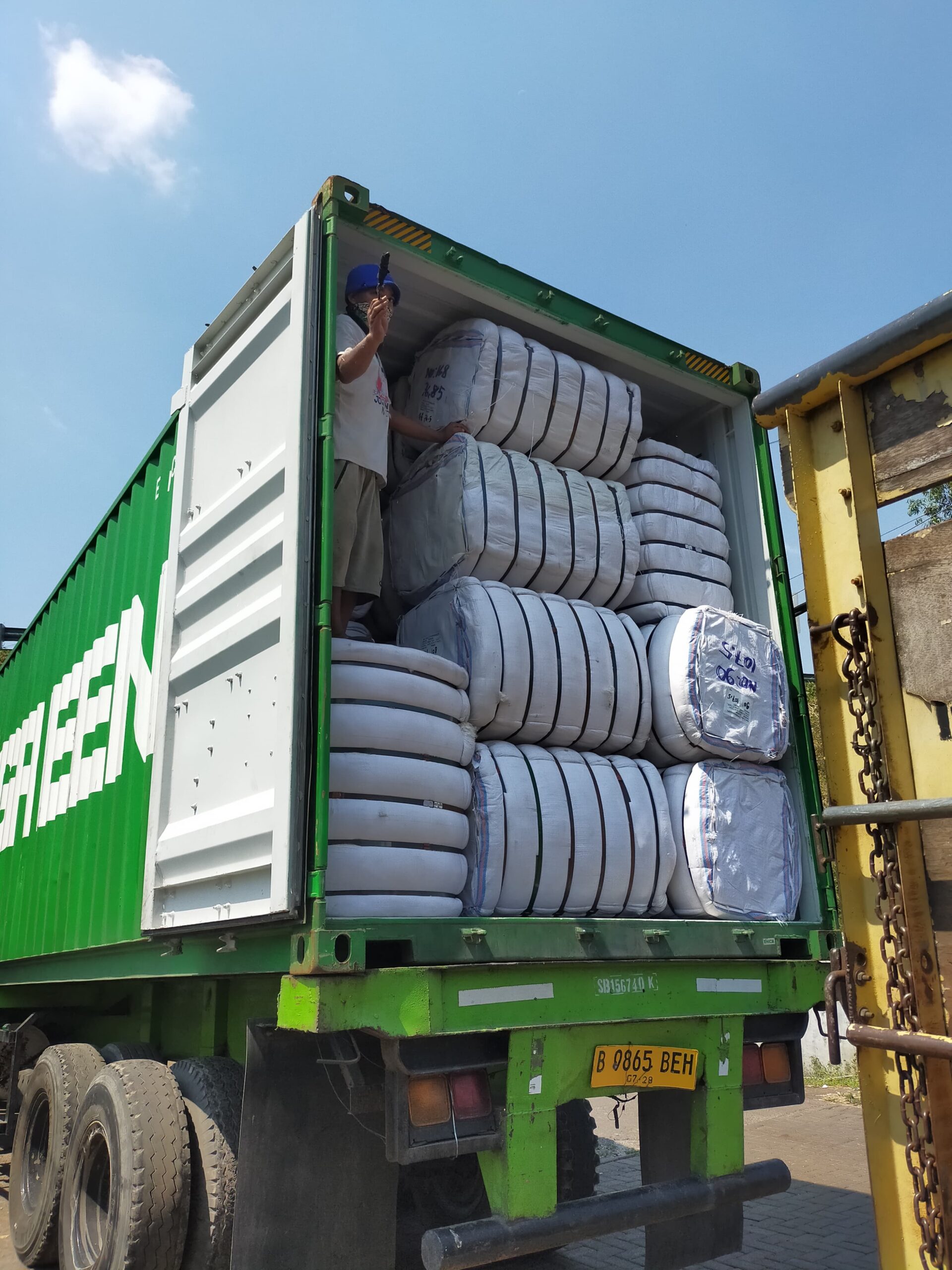CV. Media Mitra Indonesia Stuffing Procedure
Kapok Fiber Stuffing Process by CV. Media Mitra Indonesia
Stuffing is one of the common methods used to load containers to be transported into cargo. The stuffing process begins when an empty container is filled with the product to be transported and is carried out by officers according to the daily stuffing schedule that has been scheduled to deliver the product to the port. The stuffing process Kapok Fiber involves a series of steps designed to ensure that the product arrives in the best condition.
Product/goods preparation
The first thing before stuffing is preparing the goods. All ordered goods have undergone a cleaning process and have labels to identify the goods in the form of characteristics and types. It is important to ensure that the goods sent have been selected by the expedition to avoid confusion about goods that will not be sent. Next, Shipping calculates the number of packages to be sent and matches it with the data on the invoice and packing slip. If it is deemed inappropriate, you can request and report to the person in charge of preparing the goods. Then the means of transportation (truck, container) and the contract number, container number and seal prepared by the company are checked.
Container pickup
To expedite the shipping container, a Release Order (RO) needs to be issued from the marketing department. The RO is then taken by the expedition team to the warehouse to pick up the container. Upon arrival at the warehouse, the shipment will notify the location of the container pickup and then record the number of containers that need to be loaded. The shipment is required to report to the marketing department to prepare the B/L documents and facilitate unloading. For each document provided and sent to a third party, at least one archive must be created.
Stuffing
The first thing to do is the expedition party will count and record the number of packages loaded into the container. It must be ensured that the packaging number matches the data on the packing list. Then the shipping label must be to ensure compliance and if it is not appropriate, immediately report to the head of the transportation management agency for adjustment and correction. If the administrator includes a container number, the administrator must first confirm that it is compatible with. Next, make sure that the production sample has been included and included in the container, in a combined package or separately. In addition, it is necessary to pay attention to the layout of the goods in the container. Uniform load distribution must be considered to avoid imbalances that can cause damage during transportation. Choosing the right packaging is also an important consideration to maintain the integrity of the goods. Another thing to consider when stuffing is providing additional protection for the goods. For goods that are sensitive to temperature and humidity, continuous monitoring of the environment inside the container is very important. The monitoring system can provide accurate information on temperature and humidity conditions during transportation so as to ensure the quality of the goods is maintained. Some items may require additional layers of protection. The use of special packaging materials, gap filling or shockproofing becomes necessary. This step is to reduce the risk of damage due to shocks or vibrations when moving. After the loading process is completed, the container door will be immediately closed with a seal, which should be installed on the last door latch, furthest from the outside. The sealing will be carried out by the shipping company or stuffing agent.
Post Stuffing
When the packing process is complete, documents such as invoices and packing slips Bill Of Lading will be given to the vehicle driver to complete the container loading procedure at the port. Invoices via fax will be sent to EMKL if urgent during ship construction, fax invoices and packing slips as the basis for determining PEB. Then fill in the data needed to create PEB including the amount of shipping costs, insurance, container number and other information.
CV Memindo specializes in producing high-quality kapok fiber. Their stuffing process involves several crucial steps to ensure the final product meets the highest standards.
1. Raw Material Selection
The company carefully selects the finest kapok fiber from trusted suppliers. They ensure the fiber is free from impurities and meets the required length and strength for the stuffing process.
2. Cleaning and Drying
After selection, the team thoroughly cleans the kapok fiber to remove any remaining dirt or foreign particles. Then, they dry the fiber until it reaches the optimal moisture level, preventing mold growth and maintaining its quality.
3. Fiber Processing and Fluffing
Workers process the dried fiber using specialized machines that separate and fluff it. This step enhances the fiber’s softness and ensures an even texture, making it suitable for stuffing various products.
4. Weighing and Packing
The team carefully weighs the processed kapok fiber to meet the required specifications. Then, they pack it securely in compressed bales or loose form, depending on customer preferences.
5. Quality Control and Shipment
Before shipping, the quality control team inspects each batch to guarantee it meets international standards. Once approved, the company prepares the shipment, ensuring safe and efficient delivery to customers worldwide.
By following this meticulous stuffing process, CV Memindo delivers premium kapok fiber that meets the needs of various industries.
Source by : Meira Salsabela

